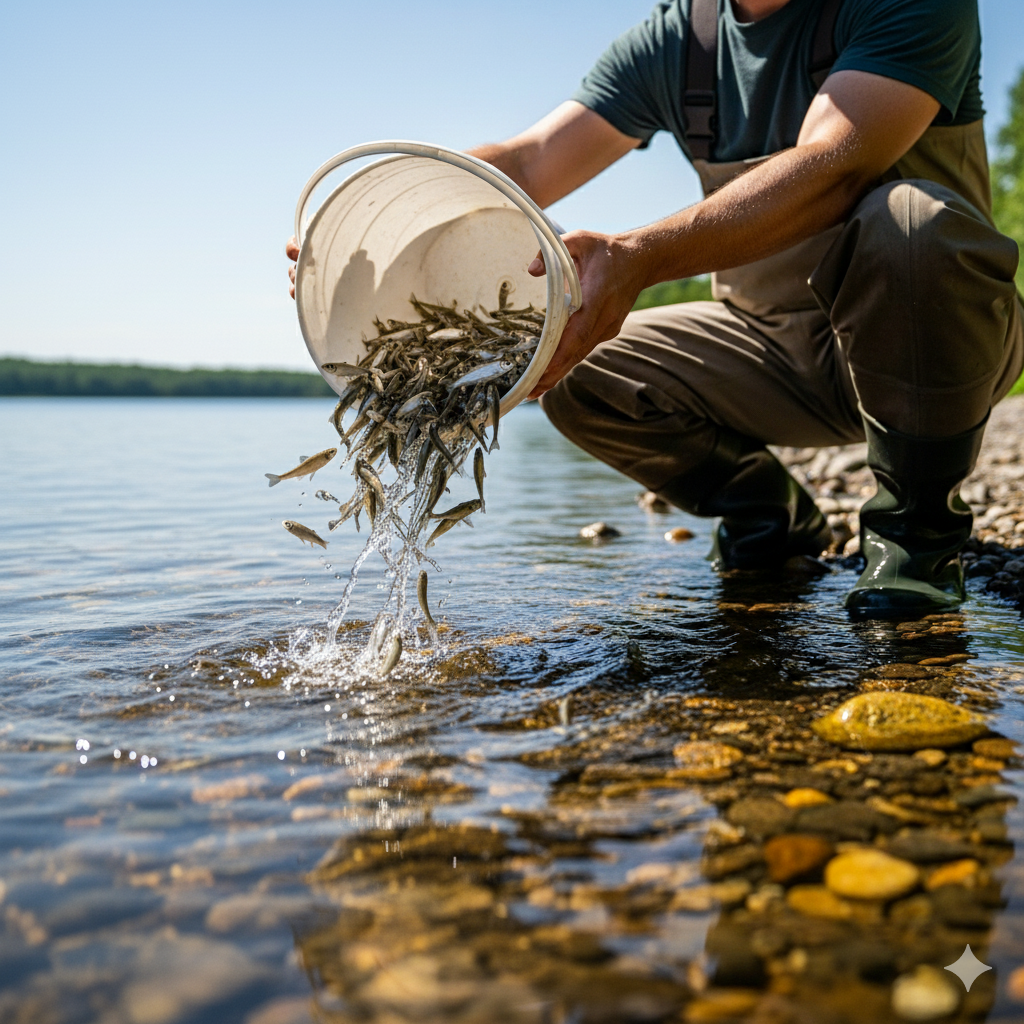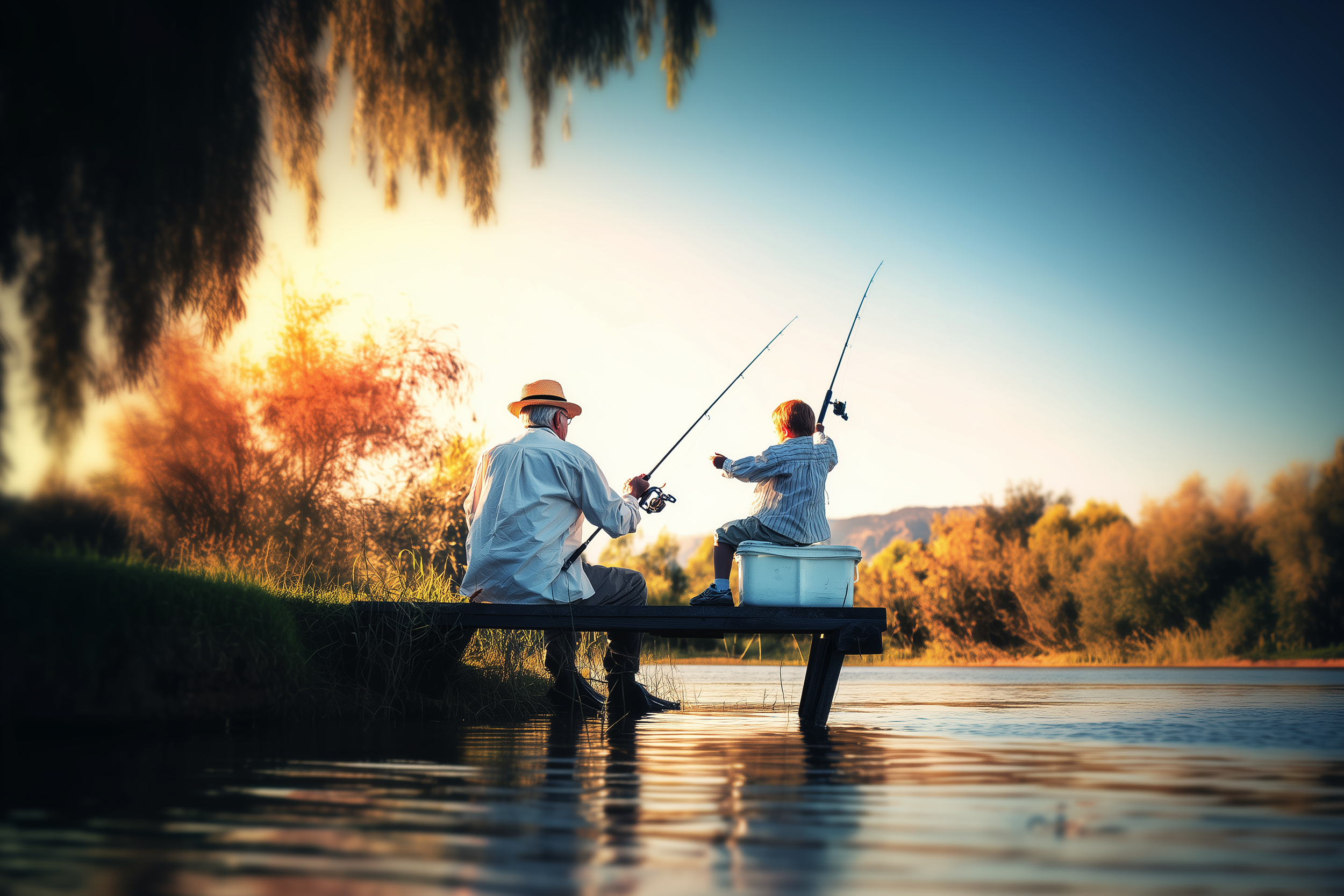
What’s at stake:
Understanding the Threats to Our Fisheries
The thrill of a tight line depends on one simple thing: a healthy, thriving fishery. We all want the same thing: strong fish populations that make for a great day on the water and a tradition we can pass down for generations.
Healthy, vibrant fish populations are the backbone of any great fishery. But when new invasive species are introduced, they can throw the whole system out of balance by competing for food and habitat and putting the fish we love at risk. It’s not just the species you can see, either. Invisible threats like fish diseases and pathogens can spread quickly and harm a fishery before we even know there’s a problem.
So how do these threats get around? They are expert hitchhikers. They can catch a ride on our boats, trailers, and fishing gear, which is why angler-led efforts like Clean, Drain, Dry are so essential for stopping many invasive species.
However, one pathway that requires special attention is the movement of live bait. The risks here are complex because threats can come from several places. First, the bait itself could be an invasive species. Second, even if the bait is native, it can carry parasites or viruses that can spread to wild fish populations. Finally, the water in the bucket is its own risk, as it can transport microscopic hitchhikers, like invasive larvae or other harmful pathogens, into a new lake or river.
Understanding these different pathways isn't a critique of angling. It's a crucial piece of the puzzle for protecting our fisheries for the long haul. By understanding the science, we can all make informed choices to ensure the health of the waters we all share.
Preserving Our Waters and Habitats
Great fishing is about more than just the fish. It’s about the entire ecosystem they call home. Healthy fish need healthy habitats, which means clean water, thriving shorelines, and the right aquatic vegetation for cover and food.
Everything in a fishery is connected. Water quality issues or damage to natural habitats can impact everything from the smallest insects to the largest sportfish. That's why our work also focuses on the bigger picture: protecting the fundamental health of the lakes and rivers that are essential for a sustainable, long-term fishery.
Ensuring the Future of Fishing
Protecting the fishing traditions we value requires looking ahead. A key part of that is having smart, practical policies in place that are guided by science, not politics.
Effective conservation relies on common-sense regulations that are designed to sustain our fisheries for the long term. This isn't about unnecessary rules; it's about using the best available research to make informed decisions that protect the sport for our children and grandchildren. Anglers have always been some of our most powerful conservationists, and your voice is essential to this process.
By supporting science-based policies and adopting responsible practices on the water, you are playing a direct role in safeguarding the future of fishing.
Simple Actions for a Big Impact
As an angler, you are on the front lines of conservation. Here are some of the most effective things you can do to protect the waters you fish:
Know Before You Go: Always look up and follow the specific fishing regulations for the waters you are visiting.
Clean, Drain, Dry: After every trip, thoroughly clean your boat, trailer, and all your gear to remove any hitchhiking invasive species.
Protect Your Bait, Protect Your Waters: Never release unused live bait or dump the water from your bait bucket. Dispose of them on land, at least 30 meters (100 feet) from the water, or in the trash.
Support Smart Policy: Lend your voice to support common-sense, science-based regulations that are designed to keep our fisheries healthy for generations to come

